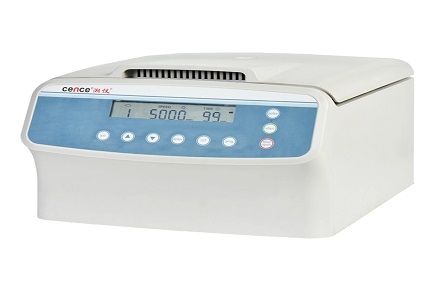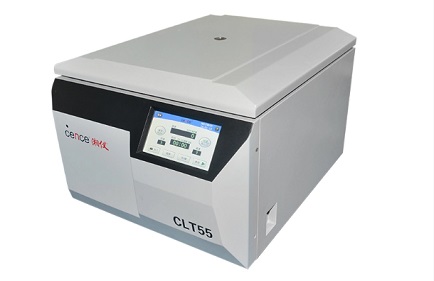Revolutionizing Blood Processing for Transfusion Excellence
Introduction: The Crucial Role of Centrifugation in Transfusion Medicine
In the intricate dance of transfusion medicine, blood centrifuges emerge as unsung heroes, revolutionizing the processing and preparation of blood components for transfusions. This passage delves into the impactful role of blood centrifuges in transfusion medicine, highlighting their significance in ensuring the safety, efficacy, and precision of blood transfusions.
Precision Separation: Ensuring Blood Component Purity
Transfusion medicine relies on the precise separation of blood into its various components, each serving a distinct therapeutic purpose. Blood centrifuges, with their ability to segregate red blood cells, plasma, and platelets, ensure that each component is pure and devoid of contaminants. This precision is paramount in preventing adverse reactions during transfusions and optimizing the therapeutic benefits derived from specific blood components.
Red Blood Cell Concentration: Tailoring Transfusions for Patient Needs
Hematocrit Harmony: Customizing Red Blood Cell Concentrations
Blood centrifuges play a pivotal role in tailoring red blood cell concentrations to meet the specific needs of patients requiring transfusions. By adjusting the centrifugation parameters, healthcare providers can concentrate or dilute red blood cells, ensuring that transfusions align with the individual requirements of recipients. This customization not only optimizes the therapeutic benefits but also minimizes the risk of complications, making transfusions safer and more effective.
Blood Conservation: Maximizing Donor Contributions
In the realm of transfusion medicine, the conservation of blood resources is a critical consideration. Blood centrifuges contribute significantly to this goal by allowing healthcare providers to extract the maximum amount of viable blood components from each donation. By efficiently separating red blood cells from other components, these centrifuges ensure that donors' contributions are maximized, reducing the need for multiple donations and promoting sustainability in blood transfusion practices.
Plasma Purity: Enhancing Coagulation Therapies and Beyond
Coagulation Cascade Control: The Role of Centrifuged Plasma
For patients requiring coagulation therapies, the purity and composition of plasma are of paramount importance. Blood centrifuges meticulously separate plasma from cellular elements, providing a pristine medium for coagulation factor administration. This precision in plasma preparation is instrumental in treating clotting disorders, ensuring that patients receive therapies tailored to their specific coagulation needs.
Specialized Plasma Products: Extracting Therapeutic Potential
Blood centrifuges extend their impact in transfusion medicine by facilitating the extraction of specialized plasma products. From cryoprecipitate for treating bleeding disorders to albumin for fluid resuscitation, these centrifuges enable the isolation of therapeutic plasma components. This versatility enhances the range of transfusion options available to healthcare providers, allowing for targeted and effective treatments across a spectrum of medical conditions.
Quality Assurance: Minimizing Risks and Maximizing Benefits
Pathogen Reduction: Safeguarding Transfusion Recipients
In the landscape of transfusion medicine, blood safety is paramount. Blood centrifuges contribute to quality assurance by enabling pathogen reduction processes. By separating and treating blood components, these centrifuges minimize the risk of transfusion-transmitted infections, ensuring that donated blood is safe for recipients. This proactive approach to safety aligns with the highest standards in transfusion medicine, safeguarding the well-being of patients.
Quality Control Protocols: Meeting Stringent Standards
Blood centrifuges, as integral components of transfusion medicine, adhere to stringent quality control protocols. From regular maintenance to calibration checks, these centrifuges undergo rigorous scrutiny to guarantee their reliability and accuracy. This commitment to quality control reinforces the trust placed in blood centrifuges for critical tasks in transfusion medicine, from routine blood component preparations to emergency situations requiring rapid and precise processing.
In conclusion, the impact of blood centrifuges on transfusion medicine is profound, shaping the landscape of blood processing and ensuring the safety and efficacy of transfusions. From tailoring red blood cell concentrations to enhancing coagulation therapies and enforcing stringent quality control measures, blood centrifuges stand as indispensable tools in the quest for excellence in transfusion medicine. As technological advancements continue, these centrifuges will likely play an even more pivotal role in optimizing blood transfusion practices, offering patients tailored and effective treatments while upholding the highest standards of safety and quality in the field.
 English
English





![[Science Popularization] PRP Autologous Serum Beauty [Science Popularization] PRP Autologous Serum Beauty](/uploads/image/20230814/17/science-popularization-prp-autologous-serum-beauty.webp)